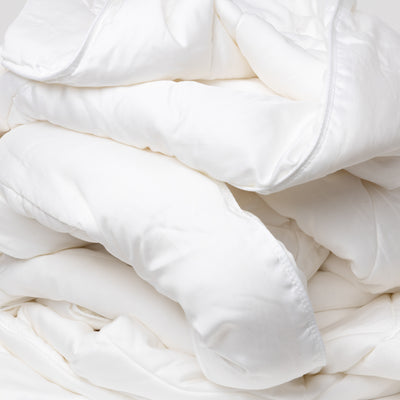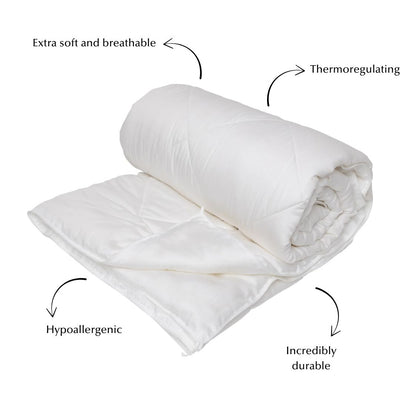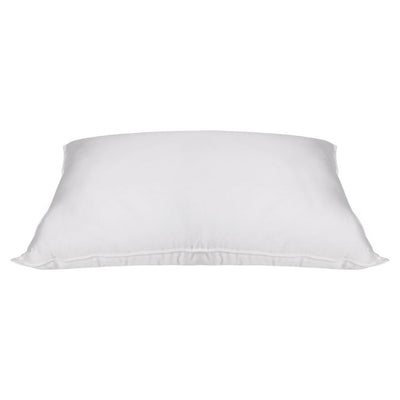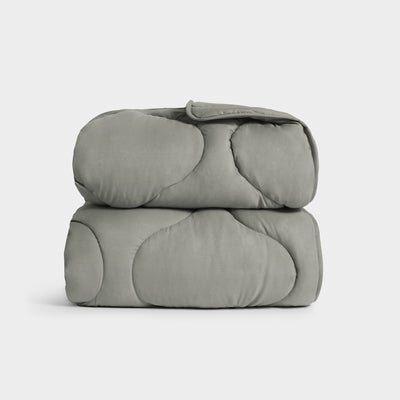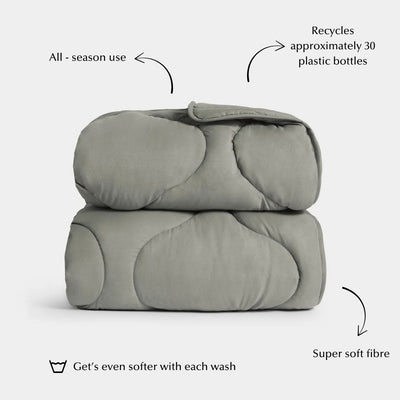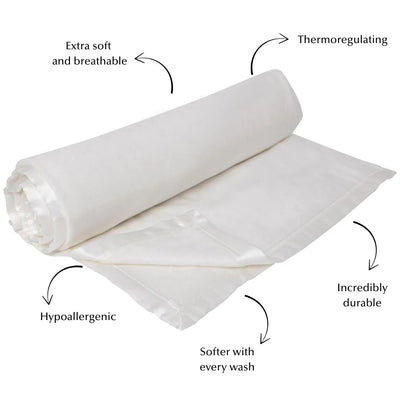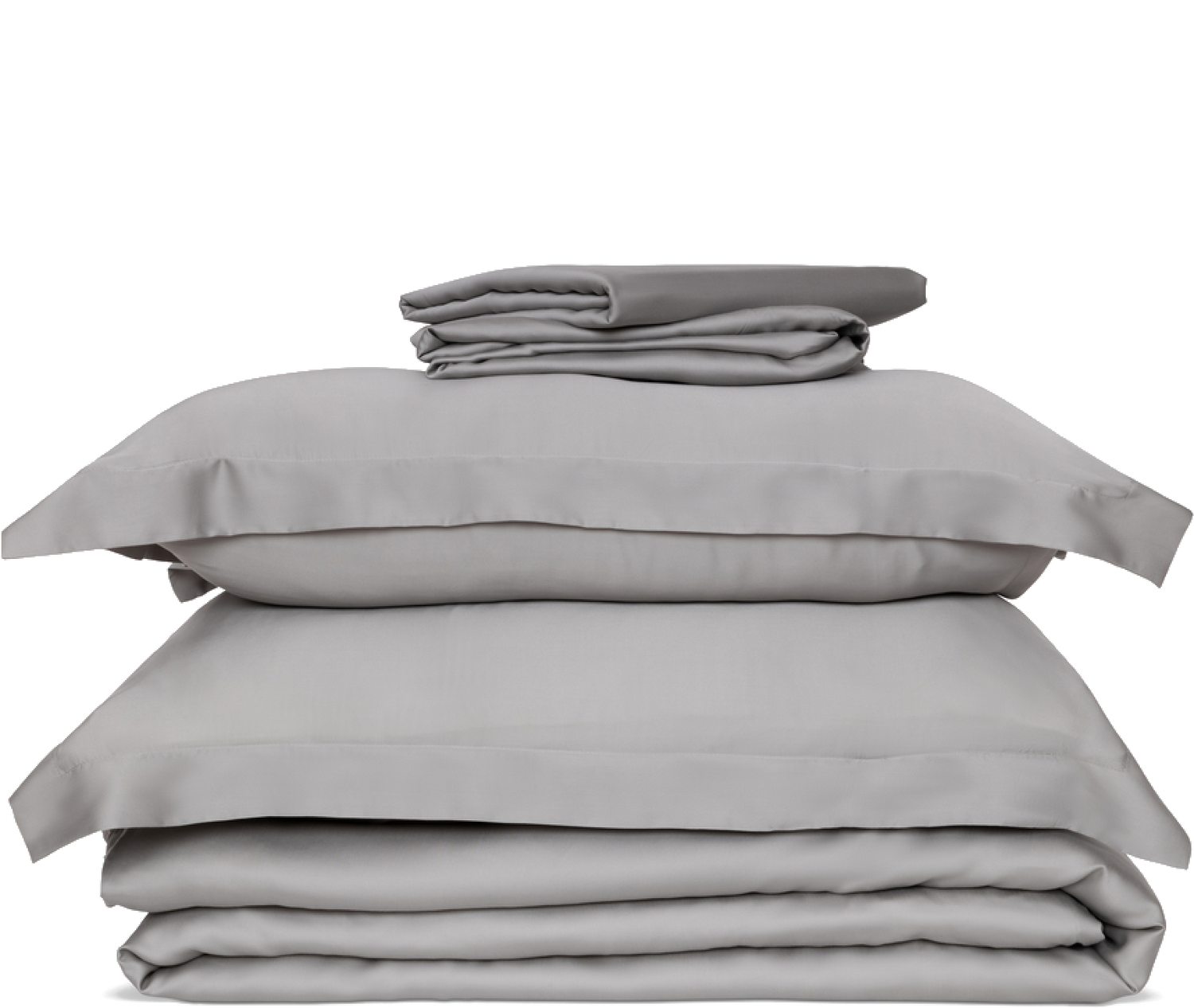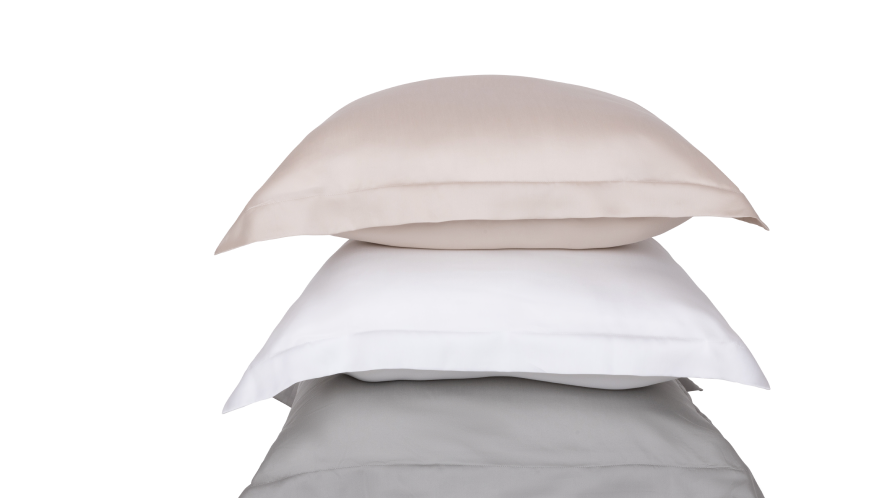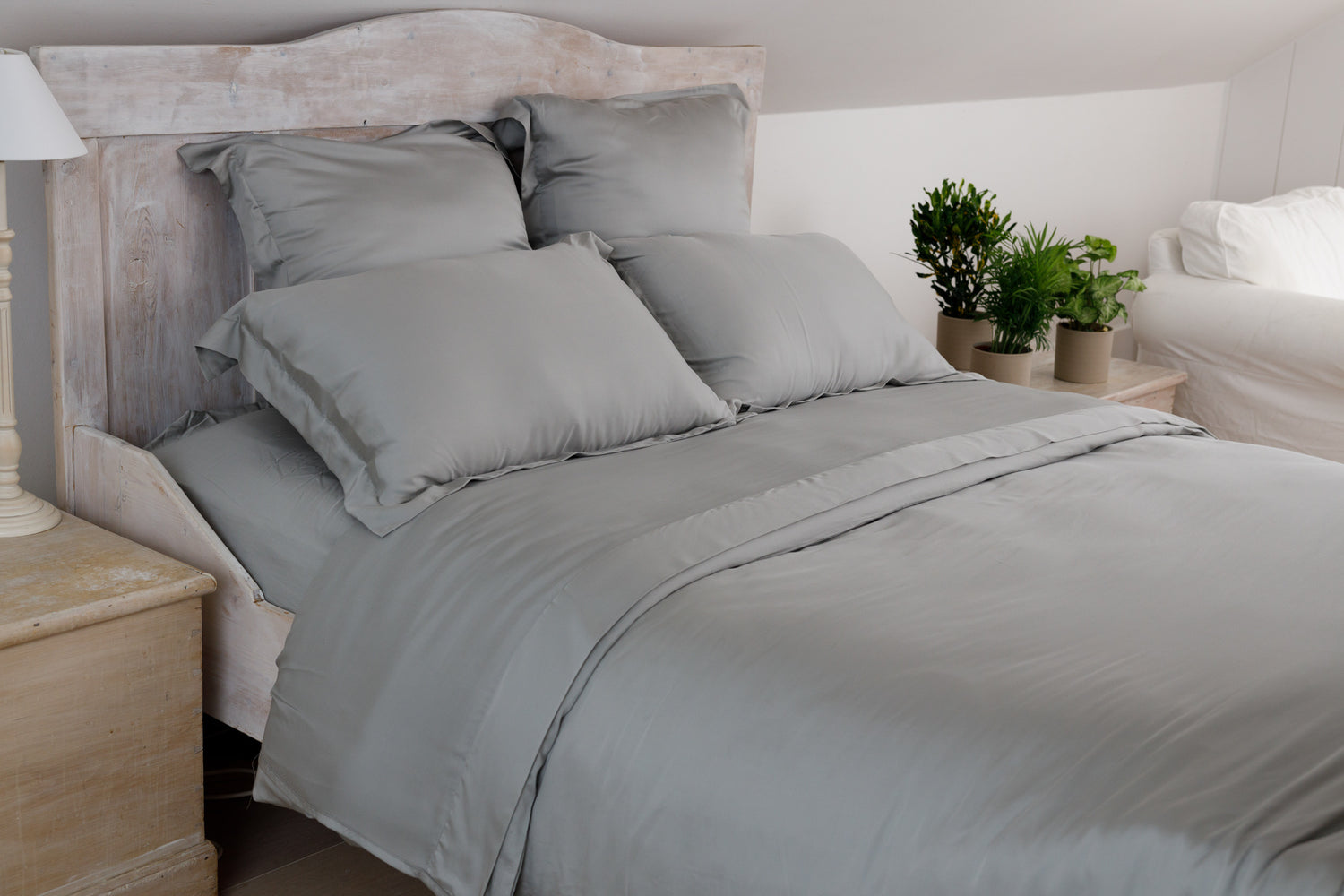Whether you’re buying new bedding or expanding your selection, you may have come across various styles of soft blanket, including throws. But what exactly are the differences between the different types?
In this article, we’ve settled the throw v blanket debate, outlining the differences and similarities, and compared the functions and benefits of each so you can make an informed buying decision.
What is a throw blanket?
Put simply, a throw can be described as a cosy companion that doubles up as an aesthetic statement piece. It’s a type of versatile blanket that’s just as comfortable being cuddled up to as it is draped over your living room sofa, combining stylish décor with practical warmth.

Typically coming in a little smaller than traditional blankets, though often available in a selection of sizes, throws are designed for practicality, and can be carried around the home at will with ease, meaning you can enjoy the benefits whether watching a film by the fire, enjoying a drink in the garden, or snuggled up in bed.
What is a blanket?
While a throw is designed for convenience, a traditional blanket is mainly used to add an extra layer of warmth and comfort to your bedding. This often means they’re larger in size, to match the dimensions of your single, double, king, or emperor sheets. Generally used year-round, a classic large blanket is a useful addition to any bedroom.
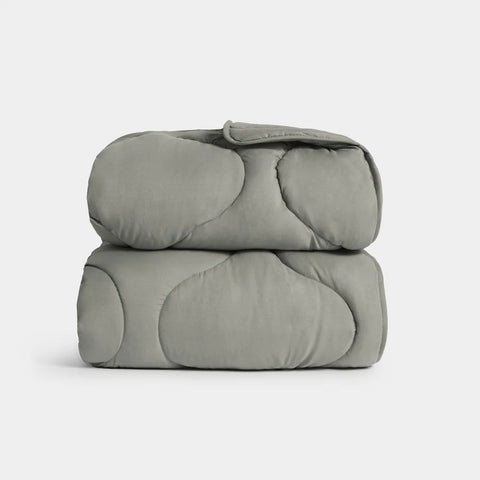
What is a throw used for?
A decorative textile available in a wide selection of styles, colours, and textures, soft throw blankets are extremely versatile and offer a range of practical uses, from sleek and elegant decoration to snuggly warmth.
While typically used to inject a little character and personality into your home, whether draped over a sofa or hanging over the sides of your bed, throws are also the ideal accompaniment when the temperature drops and you’re in need of a little extra comfort.
What is the function of a regular blanket?
A throw blanket can be used across the home, but a traditional large blanket is primarily used to add an extra layer of warmth and comfort to your bedding.
They can be kept on top of your duvet or stacked between your sheets and quilt for a cosy layer when you slip into bed on a winter’s evening. And when the temperature does start to pick up, you may even choose to ditch the duvet and sleep with just your blanket.
Materials of throw blankets
Designed with flexibility in mind, throw blankets aren’t limited by location nor the dimensions and fabric of your bedding. So, the options are more or less limitless when it comes to choosing materials. However, because they’re so often used for warmth, soft and cosy textiles are the most popular picks. Examples of common throw fabrics include:
Cotton
A lightweight and breathable fabric, cotton throw blankets are designed to keep you comfortable in all temperatures, whether it’s the deep winter or a cool summer’s evening. Egyptian cotton is considered the premium, with silky softness the standard when you choose high-quality variations.
Wool
A cosy, natural fibre, wool is among the warmest blanket materials, with heat-retaining properties often sought after by buyers. And with temperature regulation also among the benefits, you’ll keep comfortable without getting sweaty.
Fleece
A man-made fibre loved for its warmth, versatility, and long-lasting durability; fleece throws are particularly popular among buyers looking for a plush investment. However, because of its synthetic properties, fleece doesn’t hold up well when it comes to breathability, meaning you’ll likely find yourself sweating after a while.
Eucalyptus silk
A luxurious fabric that combines silky softness with chic elegance, eucalyptus silk throw blankets are the perfect companion whether you’re dressing your bed or cosying up for sofa snuggles. Naturally resistant to dust, mites, and dirt, eucalyptus is also a breathable solution that keeps you comfortable no matter the temperature.
Linen
A long-time bedding favourite, linen is a lightweight and loose fabric that keeps you comfortable. Naturally breathable and temperature regulating, linen keeps you cool when it’s warm, and cosy in the cold.
Materials of blankets
In many ways, soft bedding blankets are very similar to throws, so the most common fabrics often overlap. To give you a helping hand when picking out your next luxury addition, we’ve looked at why you might choose a cotton or wool blanket to complement your throw, and suggested a couple of other popular alternatives you may want to consider.
Cotton
Just like their throw counterparts, bedding blankets are often manufactured using cotton fibres, for their practical and lightweight design. Not only that, but cotton is exceptionally easy to care for, and high-quality options often even gets softer with each wash.
Wool
Excellent insulators: wool blankets are a great addition to your bedding when the temperature drops and you need that extra later to keep warm. While most wool blankets are comfortable and cosy, though, be aware that some styles can begin to feel itchy over time.
Polyester
A synthetic material that’s extremely effective at keeping you warm – especially in the winter months – polyester blankets are also lightweight and offer long-lasting durability. And because they’re man-made, polyester blankets are usually much more accessible and affordable than premium wools and cottons. You can even find polyester bedding that’s made from recycled plastic bottles, which removes waste from landfills and our oceans.
Bamboo
Ultra-soft and extremely comfortable, bamboo is an excellent heat regulator and highly breathable, meaning you’ll remain cool and snug no matter the temperature. And for ultimate luxury, why not combine your blanket with an elegant bamboo-filled duvet?
Sizes of throw blankets
As we’ll explain in further detail below, bedding blankets are often the bigger of the two styles, when compared to throws. While bedding blankets are designed to offer extra warmth at night, a throw is made to fit and move with you, offering cosy comfort wherever you fancy.
You’ll often find that the most common size throw is somewhere around 50” x 60”, which is much smaller than your average bedding blanket, however at Ethical Bedding we also offer large and extra large options for when you want to really wrap yourself up in luxurious comfort.
There are a few factors that might influence the size of throw you buy:
Purpose: If the primary purpose of your new throw blanket is style and aesthetic, it might not need to be quite as big as if you’re buying it for extra warmth when cosying up on the couch.
Your height: It might sound simple, but if you’re on the taller end, you’ll want to consider an oversized throw blanket to cover your feet. And at the other end of the scale, if you’re a little shorter than average, you may want a small blanket that doesn’t engulf you.
Design: The style and design of your throw may impact the size you choose. If it’s a particularly bold pattern or texture, you might want to choose a smaller size so as not to overwhelm your room. If the colours and textures are relatively subtle, you may decide your space can take a larger textile.
Sizes of blankets
As a rule of thumb, your blanket size should marry up with the dimensions of your bed, with a single bed requiring a smaller blanket than a double, and so on. The typical UK blanket sizes are:
|
BED SIZE |
BLANKET SIZE (INCHES) |
BLANKET SIZE IN CM |
|
Cot |
45 x 60 |
114 x 152 |
|
Single |
65 x 90 |
165 x 228 |
|
Double |
85 x 90 |
215 x 228 |
|
Queen |
90 x 90 |
228 x 228 |
|
King |
90 x 108 |
228 x 274 |
Of course, don’t be afraid to size up a little if you want something extra snuggly that you can wrap yourself up in on a chilly evening! Find out even more about choosing the right dimensions in our handy guide to blanket sizes.
Throw vs blanket: what’s best for you?
We’ve identified and examined each type of blanket individually, but it’s time to compare their features side-by-side. Read on to see the key differences between a blanket and a throw, and determine which might be best for you.
Blanket sizes
Size is the main point of difference between a throw and a blanket, with the latter typically that bit bigger to match the dimensions of your bedding. On the other hand, a throw is styled to offer versatile practicality and follow you around the home.
Purpose
The purpose of your new blanket will likely have a significant impact on the type you choose. If elegant aesthetic is the most important factor, you’ll probably best-benefit from a throw, while a regular blanket will be your preferred pick if you’re looking to add extra bedding layers.
Material
While there is some crossover in the materials and fabrics used to manufacturer both throws and bedding blankets, there’s generally more variety and choice for the former. However, because warmth is often on the agenda no matter the type of soft blanket you buy, you’ll often find the most popular materials are similar for each.
Design
Because throws are often seen as decorative pieces that are on show across the home, their designs can be quite bold and packed with personality. However, that’s not to say you can’t find traditional blankets that complement your character.
Hopefully, we’ve been able to help you choose between a new throw or regular blanket, whether you’re buying for comfort, style, or convenience. For even more luxurious inspiration, check out our complete range of bedding bestsellers, or head on over to the Ethical Bedding blog for more insight from our sleep experts.

